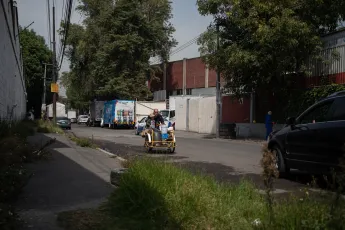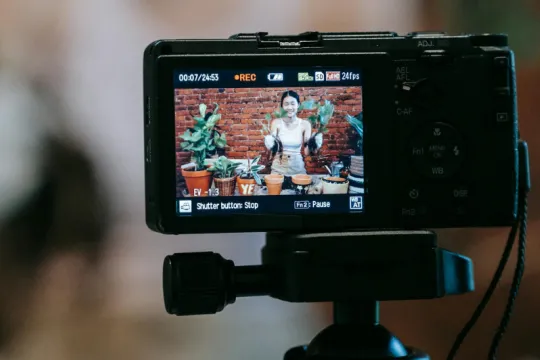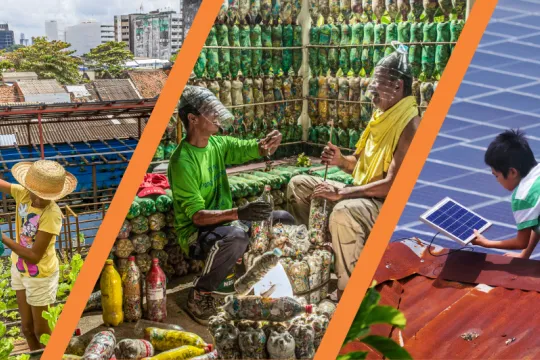
© WRI Mexico
On 16 May 2023, around 90 participants attended a webinar on transformative communication to activate citizens, strengthen capacities and inspire climate action. The event was organized by Transformative Urban Coalitions (TUC) in collaboration with Digital Storytellers, and hosted by the Paris Committee on Capacity-building under UN Climate Change.
The session brought together different actors from around the world, such as filmmakers, photographers, digital storytellers, podcasters and scientists. They shared their experiences in a talkshow format and provided their insights on creating innovative and inclusive narratives to activate citizens around the world.
Working to inspire
Climate change, its drivers, impacts and solutions are complex and not easy to grasp. Knowledge is often formulated in scientific jargon and is hidden behind paywalls. “It is key to look beyond academic circles and communicate about climate change with all parts of society” said speaker Dickon Bonvik-Stone, creator of the Communicating Climate Change podcast. “It is a missed opportunity if we do not engage better with our audience. We need to make knowledge accessible.”
A concrete example was given by Millena Oliveira, Urban Development Analyst at WRI Brasil – one of the consortium partners in TUC. She mentioned how in the pilot city Recife basic but impactful communication is disseminated by means of a so-called “anuncicleta”: a person on a bicycle with a loudspeaker, who announces a meeting of the TUC coalition throughout the community. Andrea Ramirez, senior researcher at UNU-EHS, added that knowing your audience is crucial. She explained how communication and capacity-building are interlinked in facilitating urban transformation. TUC involves local actors in doing research, because establishing urban coalitions on the road to greener and climate-friendly cities that are more socially just is impossible without exchanging information. TUC uses pictures as a way of storytelling and to show progress. For example, photo competitions are organized, and pictures have been showcased during an exhibition at COP27. “Fighting climate change and social justice go hand in hand”, Ramirez said.
Another way to raise awareness and engage audiences is through citizen science communication, Diana Garlytska of the IUCN Commission on Education and Communication explained. While talking about how to better create inclusive and collaborative narratives, she highlighted how the climate crisis cannot be solves by one player or stakeholder group. “Multi-stakeholder engagement is needed for sustainable development” Garlytska said. “It guarantees diversity and different perspectives from different locations. Local contexts influence stakeholders, and diversity requires different approaches.” She revealed how combining storytelling with citizen science can be of great support in doing so: “Science is everybody’s business and needs to be approachable and understandable.”
Pete Dowson of Digital Storytellers fully agreed with Garlytska. He stated that stories are only as powerful as the impacts they create. Storytelling helps to make meaning of what happens around us and is one of the most ancient crafts in the world. Dowson clarified his statement with the use of a metaphor: “If we share our stories, they come back to us as an Australian boomerang. Feedback we receive on our story is often very different than the initial story. It helps us to open ourselves to change and new perspectives.” To illustrate the magic of storytelling, Dowson mentioned how there are three specific stories to share in communicating climate stories for a better world. There are stories describing a memory that somehow impacted you, stories of the brightest vision for the brightest future, and stories clarifying the next steps we can take towards realizing that brighter future.
In communicating a certain message, filmmaker, photographer and National Geographic Explorer Molly Ferril presented her views on how to not only inspire, but also activate citizens. Videos and photos can bring us closer to someone else’s experience. “We only care about what we know deeply. If we personally experienced climate change, we would be more likely to take action,” Ferril said. “Film and photographs are the closest means to let someone feel the experience of somebody else and can therefore help in moving people into taking action.” She mentioned how it is crucial to stay true to the story, and how important it is to include local collaborators as allies in your story. Environmental stories are often heavy and difficult. Telling the truth without overwhelming people is challenging, but it can help to include solutions, as it helps an audience to connect and engage, which makes it more likely they will take action.
From story to action
Using communication to learn from others and to bring science closer to an audience can be tricky. Dowson highlighted how less data-driven messaging can help with that. “Data is not personal or relatable. Find a personal story that embodies the data and help the audience to relate through the experience of someone else.” Bonvik-Stone added that breaking through the jargon is essential, and Ramirez mentioned how science is not the only source of knowledge. “People on the ground know what their priorities and realities are. Listening to them in a projects like TUC enables us to become better conversationalists, and therefore better communicators” she explained.
As a final word of advice, Dowson underlined the importance of always putting the story first by personalizing science: “Speak to the heart. It is the fastest way to change the mind.”
A recording of the webinar is available here.

